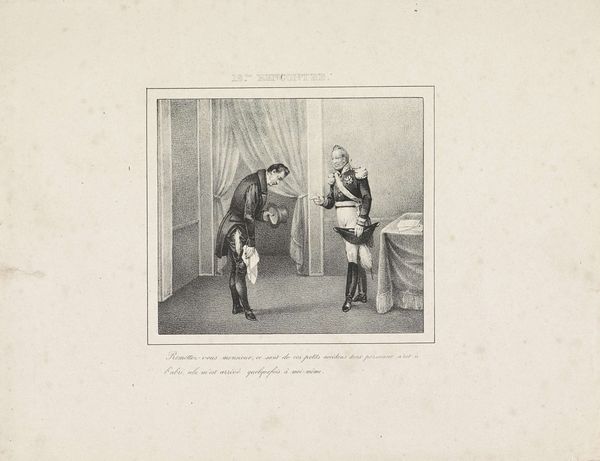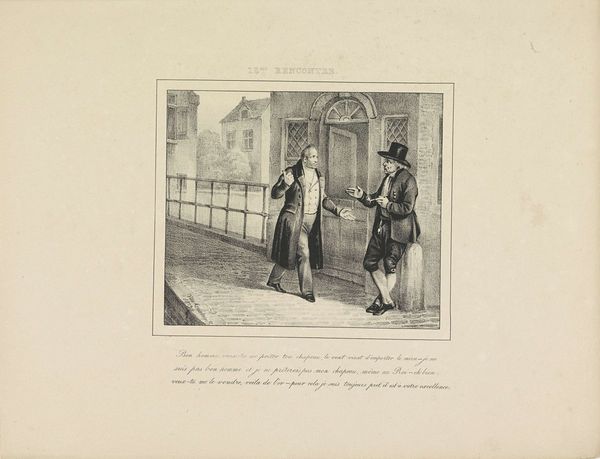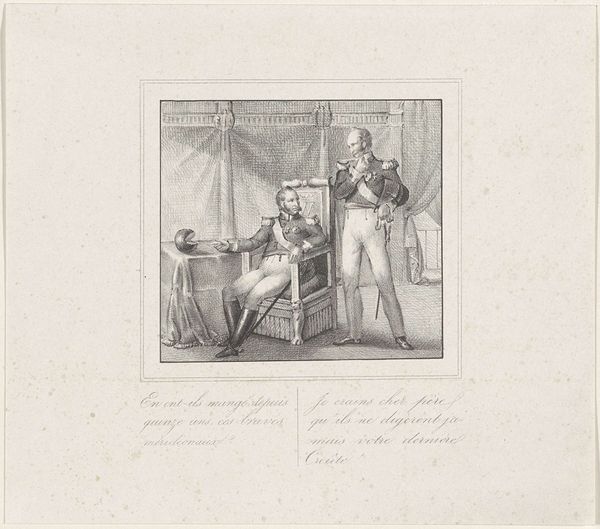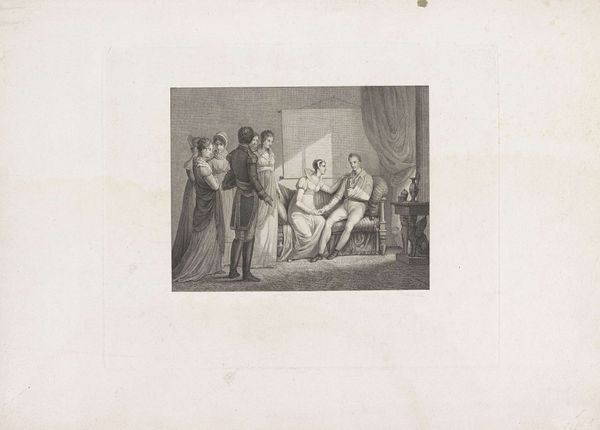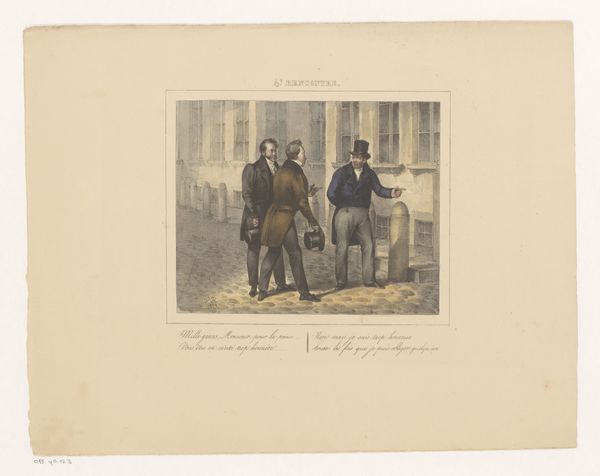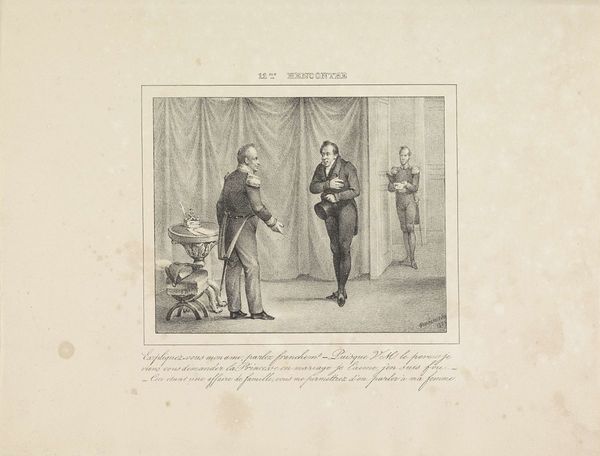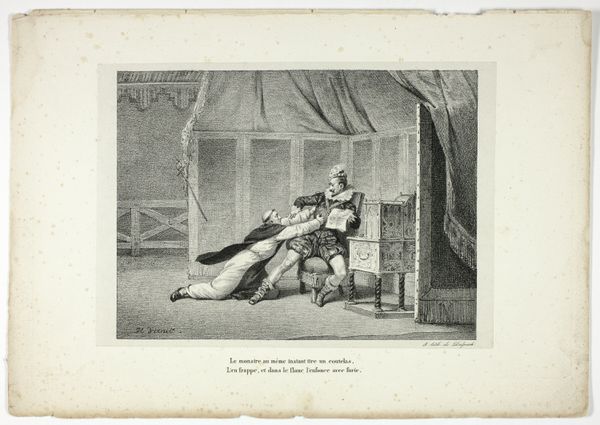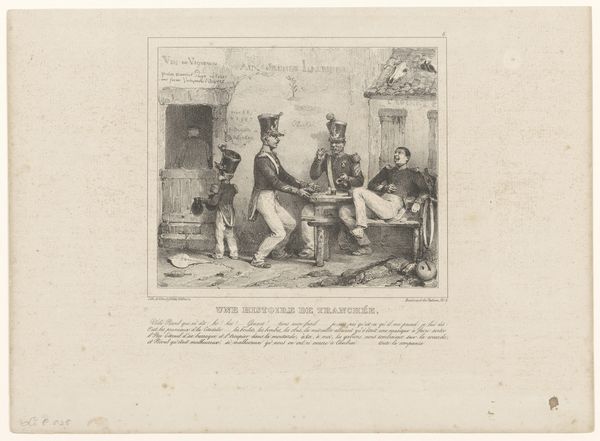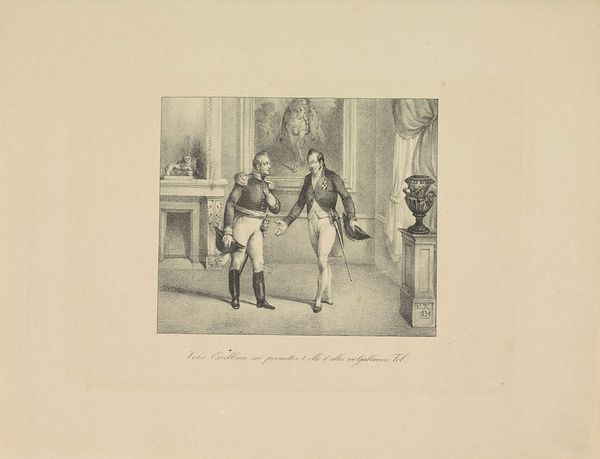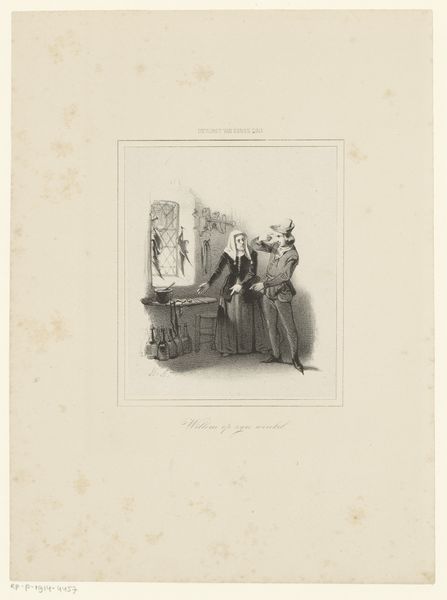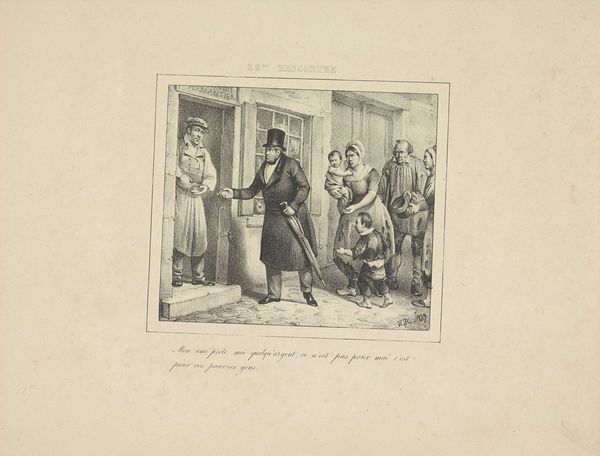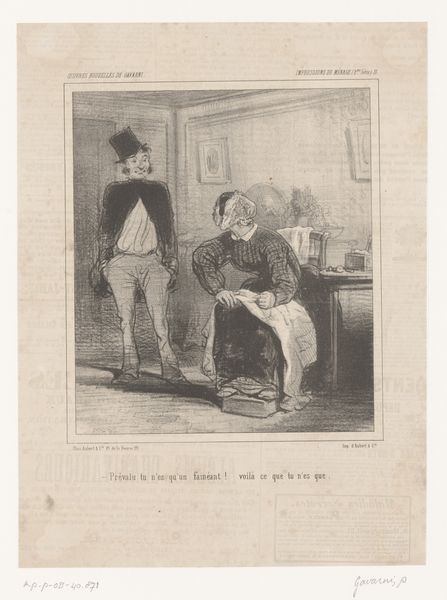
Koning Willem I geeft Talma toestemming te spelen wat hij wil, 1829 1830
0:00
0:00
drawing, print, paper, ink, graphite
#
portrait
#
drawing
#
neoclacissism
#
narrative-art
# print
#
paper
#
ink
#
classicism
#
romanticism
#
graphite
#
history-painting
#
academic-art
Dimensions: height 235 mm, width 305 mm
Copyright: Rijks Museum: Open Domain
Curator: This print depicts a meeting between King William I and the actor François-Joseph Talma in 1829, though it was rendered the year after. Van Hemelryck created this piece, as well as the original drawing, using graphite, ink and paper. I'm immediately struck by its theatrical quality. What do you see in it? Editor: It feels like a snapshot of a stage play! It has a neoclassical style with, interestingly, a touch of romanticism evident in its dramatized setting. The artist appears to immortalize what feels like an important cultural moment. What does it reveal to us about the period? Curator: Exactly! Van Hemelryck has captured a pivotal intersection of power and artistry. Consider the period—the Netherlands was establishing itself after the Napoleonic era. Theatre served not just as entertainment but as a cultural mirror reflecting and shaping national identity. Talma, a renowned tragedian, becomes a symbol. Why do you think this meeting warranted documentation? Editor: Maybe because the King's acknowledgement of an actor signifies the growing acceptance of the arts? The inscription at the bottom suggests freedom of expression – a politically charged concept in post-revolutionary Europe? Curator: Precisely. And note the setting – suggesting a liminal space, almost a stage in itself. It invites questions about power dynamics, patronage, and the role of the artist in shaping public opinion. Doesn't this speak to the politics of image-making and the construction of narratives surrounding leadership? Editor: I see that! I didn’t consider the theatrical setting as part of the message. That is so clever. Curator: Well, it also showcases how art during that era functioned as both a recorder and a constructor of social values. And what I take away from this is how artists then engaged with questions around freedom and influence within shifting socio-political landscapes. Editor: Absolutely! Thinking about theatre as a form of political discourse during that time offers a richer understanding of this artwork, its cultural weight, and also its social impact. Thanks!
Comments
No comments
Be the first to comment and join the conversation on the ultimate creative platform.
